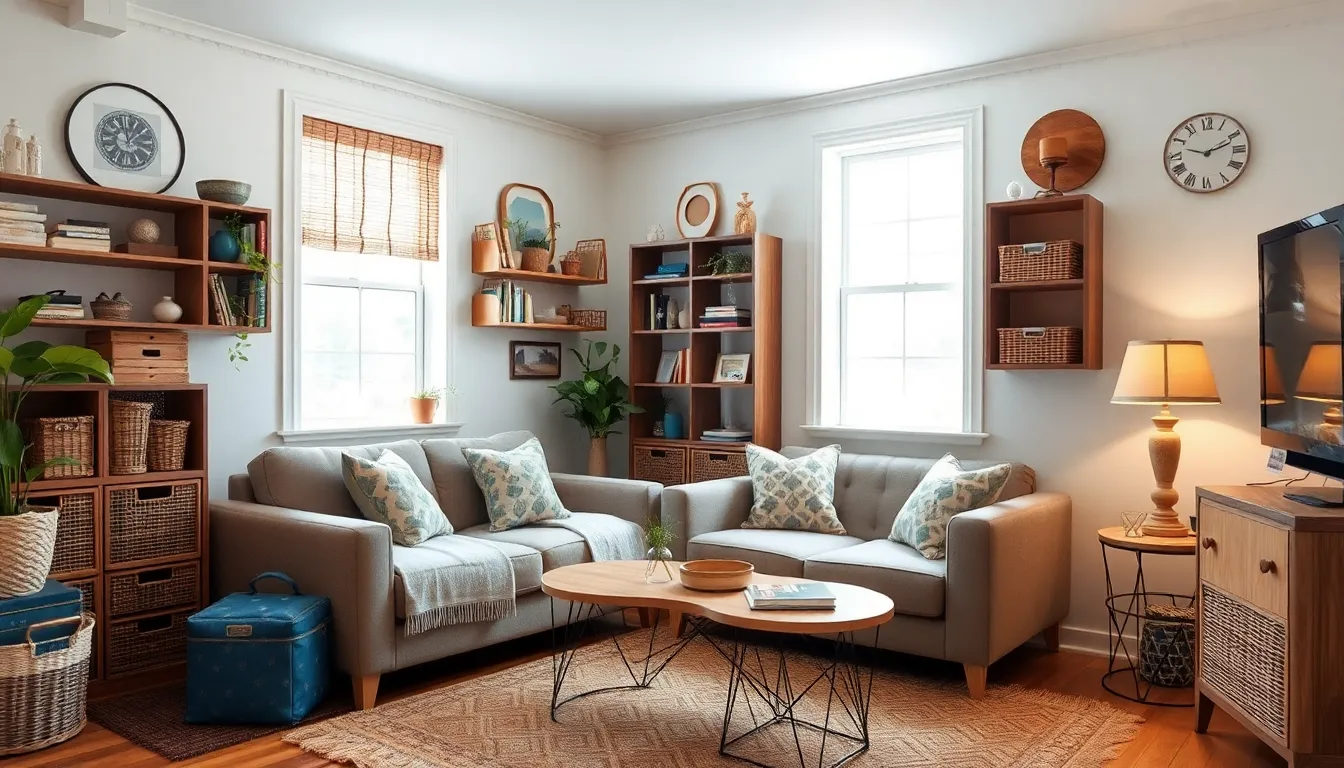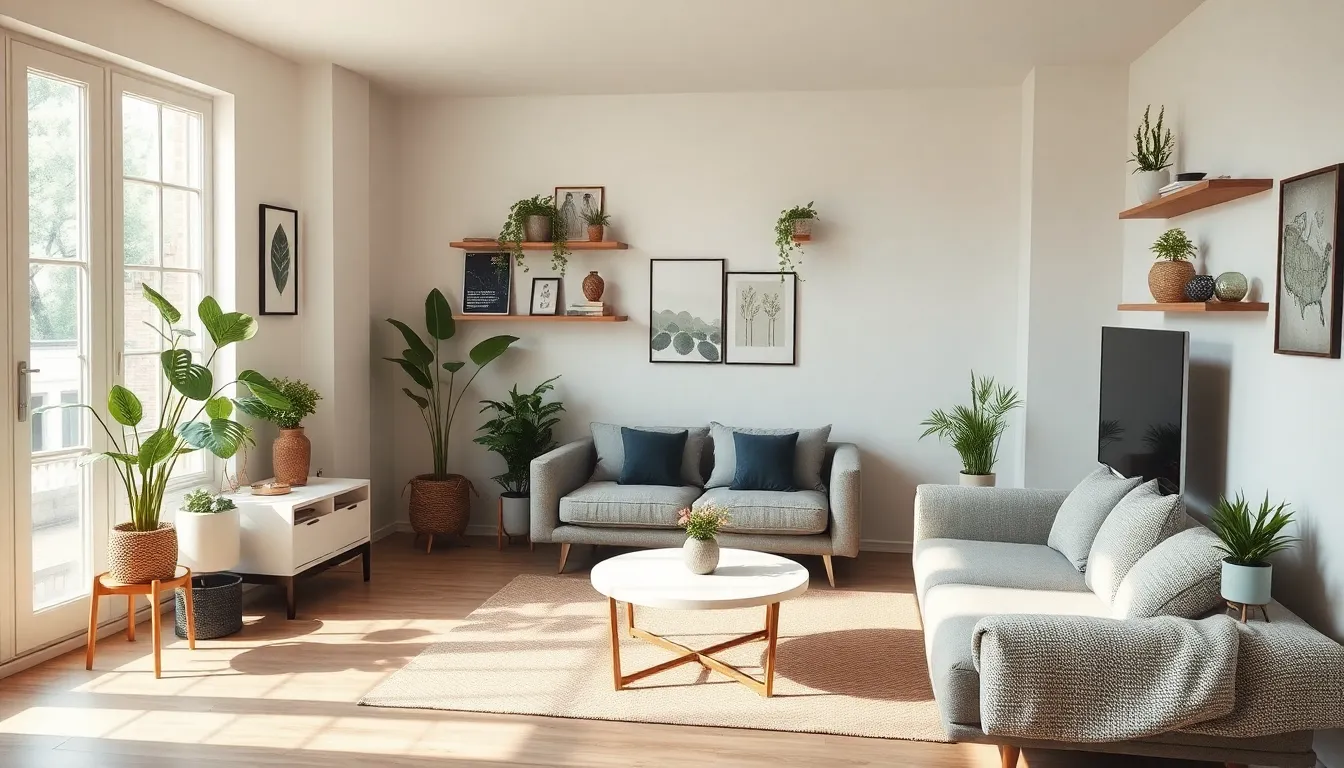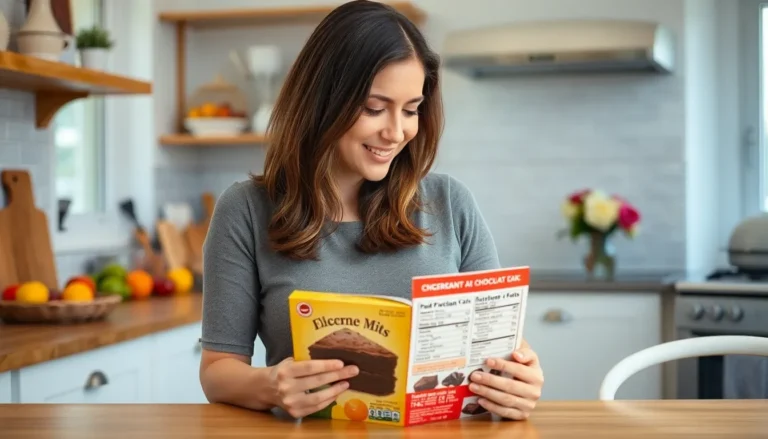Table of Contents
ToggleIn a world where square footage often feels like a precious commodity, small space design becomes an art form. It’s all about turning those cozy nooks into stylish sanctuaries that scream personality without sacrificing function. Who says you can’t have a chic living room in a shoebox? With a sprinkle of creativity and a dash of clever planning, even the tiniest apartments can pack a punch.
Understanding Small Space Design
Small space design focuses on maximizing limited square footage while ensuring functionality and style. Transforming compact areas into attractive living environments requires careful planning and creativity.
Importance of Efficient Layouts
Efficient layouts play a crucial role in small space design. Strategic furniture placement enhances flow and usability, making the most of every square foot. Prioritizing multifunctional pieces allows for better organization and maximizes available space. Open floor plans create an illusion of depth and unity, while defined zones provide a sense of purpose. Smart storage solutions, such as built-in shelves and hidden compartments, reduce clutter and maintain a clean aesthetic.
Key Principles to Apply
Applying key principles ensures successful small space design. Opt for a neutral color palette, which visually enlarges the area and promotes a serene atmosphere. Incorporate mirrors to reflect light and create a sense of openness. Choose furniture with exposed legs to enhance the feeling of space beneath. Use vertical design elements, such as tall bookshelves or wall-mounted plants, to draw the eye upward. Finally, consider scale and proportion when selecting decor, ensuring it complements the space rather than overwhelming it.
Creative Solutions for Small Spaces

Designing small spaces requires clever strategies to maximize both utility and style. Exploring innovative options makes the most of limited square footage.
Multifunctional Furniture
Multifunctional furniture serves several purposes, enhancing a room’s utility. Sofas that convert into beds are perfect for accommodating guests. Nesting tables offer flexibility for social gatherings while saving space when not in use. Ottomans with storage capabilities add seating and keep items organized. Foldable desks create a workspace when needed and tuck away easily afterward. Investing in such pieces significantly improves the functionality of small living areas.
Smart Storage Ideas
Smart storage ideas elevate organization in compact environments. Utilizing vertical space with shelves draws the eye upward and maximizes storage potential. Under-bed storage boxes provide hidden space for seasonal items or shoes. Customized cabinetry in unexpected areas maximizes every inch. Pegboards in kitchens or home offices offer an accessible display for tools and supplies. Wall-mounted baskets or hooks keep frequently used items within reach. Prioritizing these storage solutions creates an uncluttered and stylish atmosphere, enhancing the overall design of small spaces.
Design Styles for Small Spaces
Design styles play a crucial role in enhancing small spaces. Choosing the right style can maximize utility, create a sense of spaciousness, and reflect individual tastes.
Minimalism
Minimalism emphasizes simplicity and functionality. Clean lines and uncluttered surfaces characterize this style, allowing small areas to appear larger. Color palettes often feature soft, neutral shades that enhance natural light. Essential items like a sleek, multifunctional dining table or a streamlined sectional sofa exemplify minimalist furniture choices. Incorporating hidden storage solutions, such as ottomans with compartments, keeps clutter at bay. Art and decor should remain limited to a few impactful pieces, ensuring focus and tranquility in the space. This approach fosters an airy atmosphere conducive to relaxation.
Maximalism
Maximalism embraces abundance and personality, making it ideal for small spaces that seek bold expressions. Layering patterns and textures brings depth to these compact areas. Vivid colors and eclectic decor choices create a lively, stimulating environment. Statement furniture, such as an oversized tufted armchair or a colorful patterned rug, adds character. Accessories, including vibrant cushions and varied artwork, contribute to a striking ambiance, encouraging individuality. Balance is achieved through strategic placement to avoid overwhelming the space while celebrating uniqueness. An inviting maximalist room can feel cozy and exuberant despite its size.
Challenges in Small Space Design
Small space design presents unique challenges that require thoughtful solutions. Understanding common issues can help in creating effective layouts.
Common Mistakes to Avoid
Choosing oversized furniture often leads to a cluttered feel. Decorating without considering scale can overwhelm a small area. Overlooking vertical space prevents maximizing storage opportunities. Ignoring natural light limits the perceived spaciousness of the room. Additionally, neglecting functionality while focusing solely on aesthetics can result in impractical design choices. Prioritizing multifunctional furniture allows for better flow and use of space. Opting for a neutral color palette enhances openness and light.
Overcoming Limitations
Addressing the limitations of small spaces starts with efficient layouts. Implementing clever storage solutions, such as wall-mounted shelves or under-bed drawers, directly maximizes utility. Using mirrors strategically creates the illusion of depth, making rooms feel larger. Adopting an open floor plan fosters a seamless transition between areas. Incorporating flexible furniture, such as foldable tables, increases versatility. Taking advantage of vertical design elements draws the eye upward, enhancing the overall aesthetic. Emphasizing light colors further contributes to a bright and airy environment.
Small space design is all about creativity and smart choices. By embracing multifunctional furniture and efficient layouts, anyone can transform a compact area into a stylish haven. The right design elements can make a world of difference, allowing for both functionality and personal expression.
Utilizing vertical space and incorporating light colors can enhance the overall feel of a room. Whether opting for minimalism or maximalism, the key lies in balancing style with practicality. With thoughtful planning and innovative solutions, small spaces can be inviting and uniquely personal. It’s clear that with the right approach, even the coziest corners can shine.








